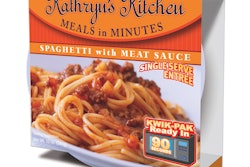“Show me the money” has become the battle cry during the past couple of years for consumer packaged goods companies that outsource contract packaging and manufacturing operations. It is not surprising that branded marketing companies heightened focus on reducing costs of outsourcing as the economy has contracted and consumers have become more value conscious.
As a result, there seems to have been a flurry of “RF”s (request for) during the past 18-24 months (RFI, RFP, RFQ, RFS). And, perhaps not surprisingly, companies are reporting significant reductions in costs of sourcing as a result. The question is, are they really “saving” the dollars reported?
First, let’s recognize that each product/brand/project/relationship is unique and different. As a result, sometimes there isn’t an apples-to-apples comparison. However, in this article we’ll make some broad generalizations based on current industry practice. To assess the need to send out a bid, below are suggested key questions that should be considered:
• Supplier segmentation. As suppliers are evaluated, how are they segmented? By price? Technology? Geography? Breadth of services? Supplier segmentation might be the most important consideration in outsourcing services. This activity separates suppliers that generate value from those that don’t. If the net result of your supplier-segmentation effort doesn’t yield a clear understanding of relative value, then perhaps additional criteria should be considered. Otherwise, the potential exists to discard an existing supplier who can potentially deliver far more value in the short and long term than others.
• Motivation. As branded marketers consider putting businesses out for bid, what is the primary motivating factor? Is it always done every ‘X’ number of years? When a lofty savings goal is established? When the organization has new leadership? Business bids have a clear role in the industry. However, motivations aren’t always as they should be. If current suppliers are not meeting clearly communicated and measured expectations, or it is a new business, then it is a worthwhile use of time and company resources. If not, an “RF” may be one step forward and two steps backward when fully considering the costs of the RF process, business transition, and time to get new suppliers fully integrated into internal processes.
























